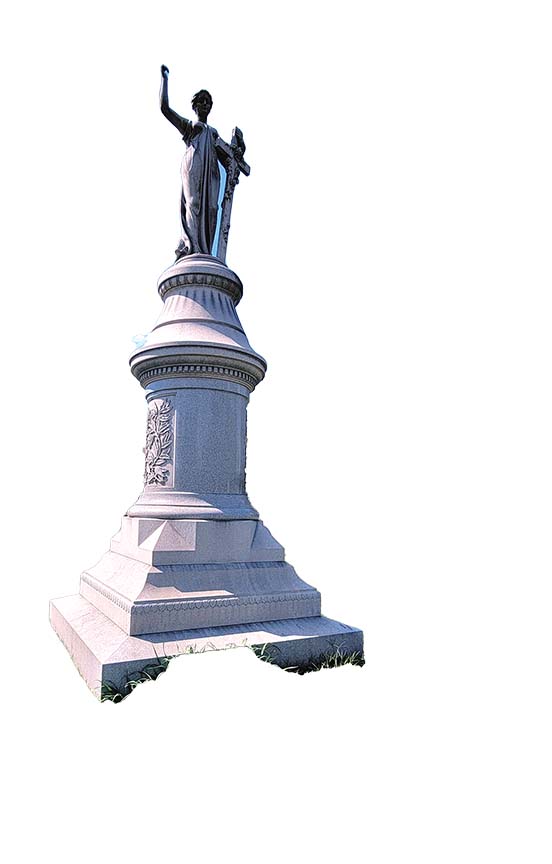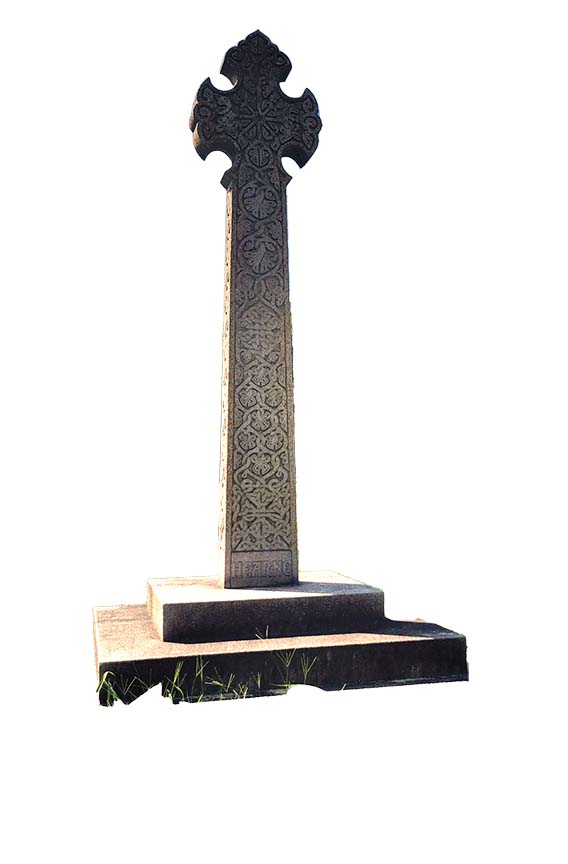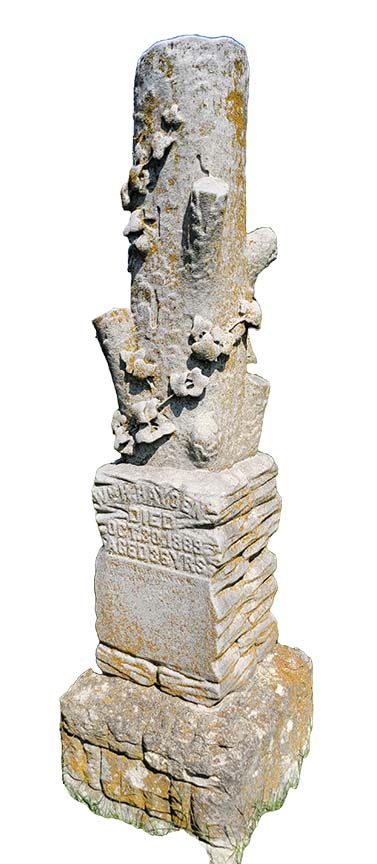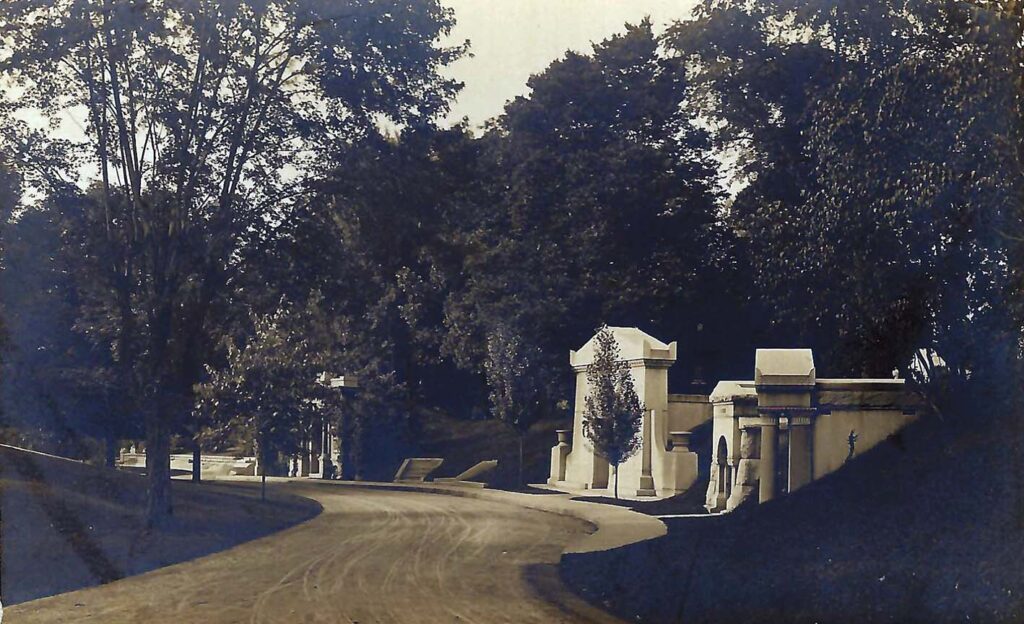
Michael Bushnell
Northeast News
Funerary Art is well represented in Elmwood Cemetery and some of the finest stone carvings can still be seen in a number of the tombstones placed around the turn of the 20th century.
Grave markers, in their earliest forms, were often nothing more than a pile of rocks placed over the grave in order to keep the dead from escaping according to early superstitions. As time progressed, the carvings had more to do with frightening the living rather than memorializing the dead according to Paul T. Nelson, one of the contributing authors to the 2010 book Elmwood Cemetery, published by Bruce Mathews, DJ Hyde Matheny and Anne Sutton Canfield. “Images of skulls and skeletons were common and are generally referred to as memento mori, translated meaning remembrances of death.
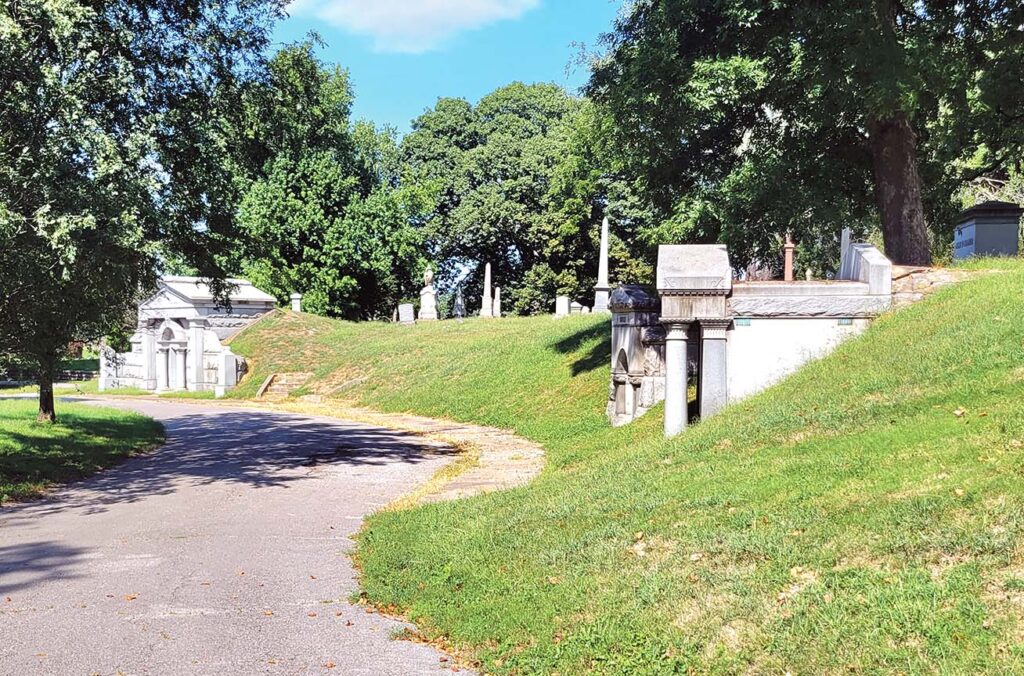
Early cemeteries were often located on a family’s land or a graveyard located next to a church. The plots were relatively small by comparison to today’s standards and gravestones were proportional to the small plot in size as well. The birth of modern cemeteries can be traced to the establishment of Pe’re Lachaise Cemetery in Paris, France in 1804 that featured wide open spaces and lots of room for family plots.
Larger area for plots meant more room for monuments and memorials that could become more artful and meaningful. During the Victorian era, honoring one’s dead became more competitive with families often trying to “out-mourn” each other through the placement of extremely elaborate memorials.
Some examples in Elmwood include stones with carvings of a palm over the top symbolizing victory over death.
A broken tree, tree stump or broken branch symbolizes a life cut short or the end of life. A Latin Cross symbolizes the Holy Trinity. One of the grandest memorials at Elmwood is that of Benjamin McClean, an early Kansas City harness, hide and leather merchant who’s memorial, standing roughly thirty feet tall, boasts an angel pointing to heaven. She is holding a cross adorned with garlands of flowers that symbolize weeping or mourning.
Mausoleums are also a common sight in Elmwood Cemetery, also part of the competition during the same era. Mausoleums originated when Maussollos, King of the Persian province of Caria died in 350 BCE. (Before Common Era) Maussollos’ tomb stood roughly 135 feet in height and featured Greek architectural elements created by four Greek sculptors of the day. The modern term mausoleum is derived from the term Mausol-eion, generically referring to any grand tomb.
Of the nine free standing and fifteen earth contact mausoleums in Elmwood, all are adorned with Greek Revival elements, often with columns flanking a large central gate or door, topped with Doric, Ionic or Corinthian Capitals. Some, such as that of Henry Ludlow Waldo also feature a small courtyard area in front of the gate or door where families could gather before entering the interior of the mausoleum.
This week’s Historic Postcard was published by the Elmwood Cemetery Society shortly after the turn of the 20th century. The mausoleums shown in the postcard image are those of the Jackson and Irvin families and lie in the central area of the cemetery.

